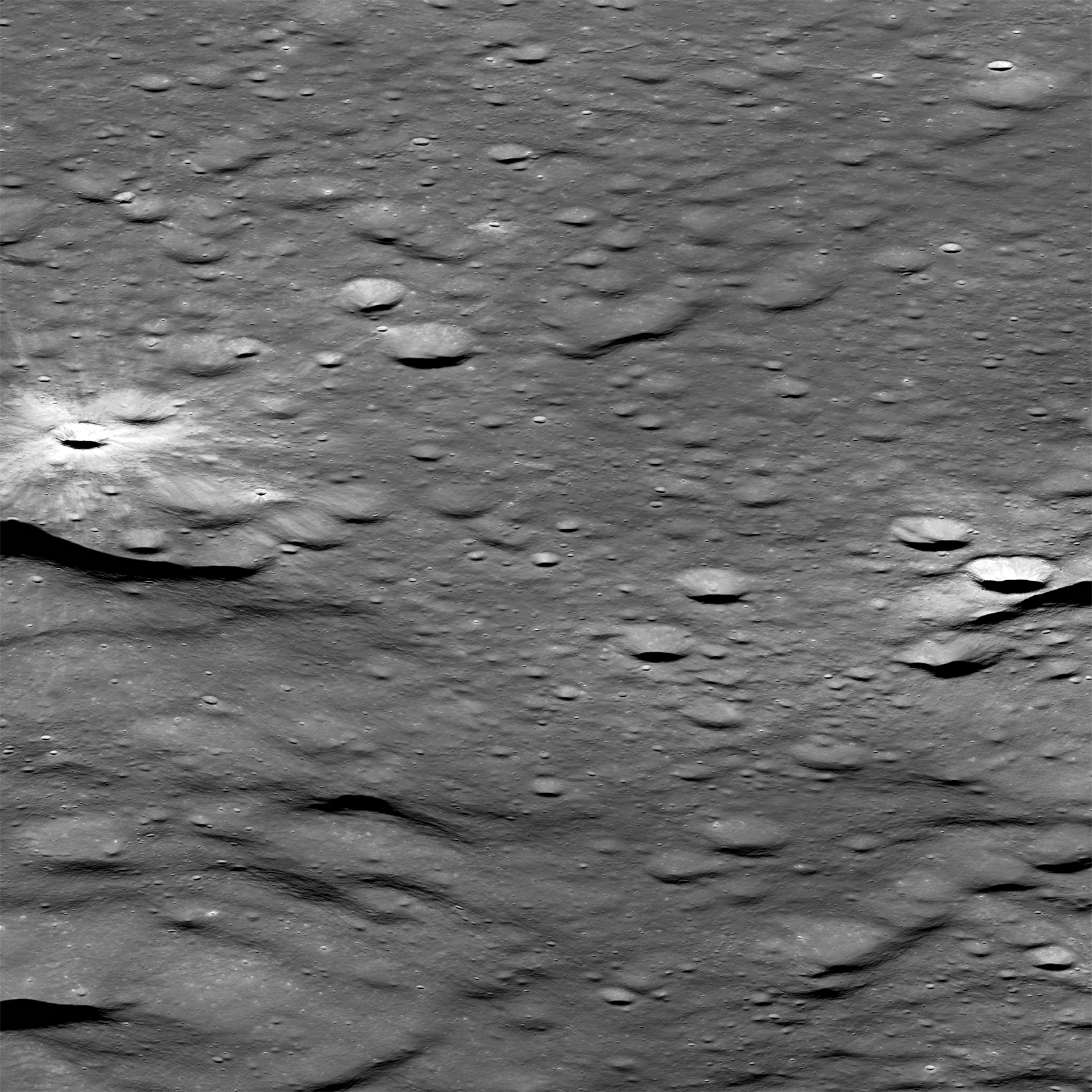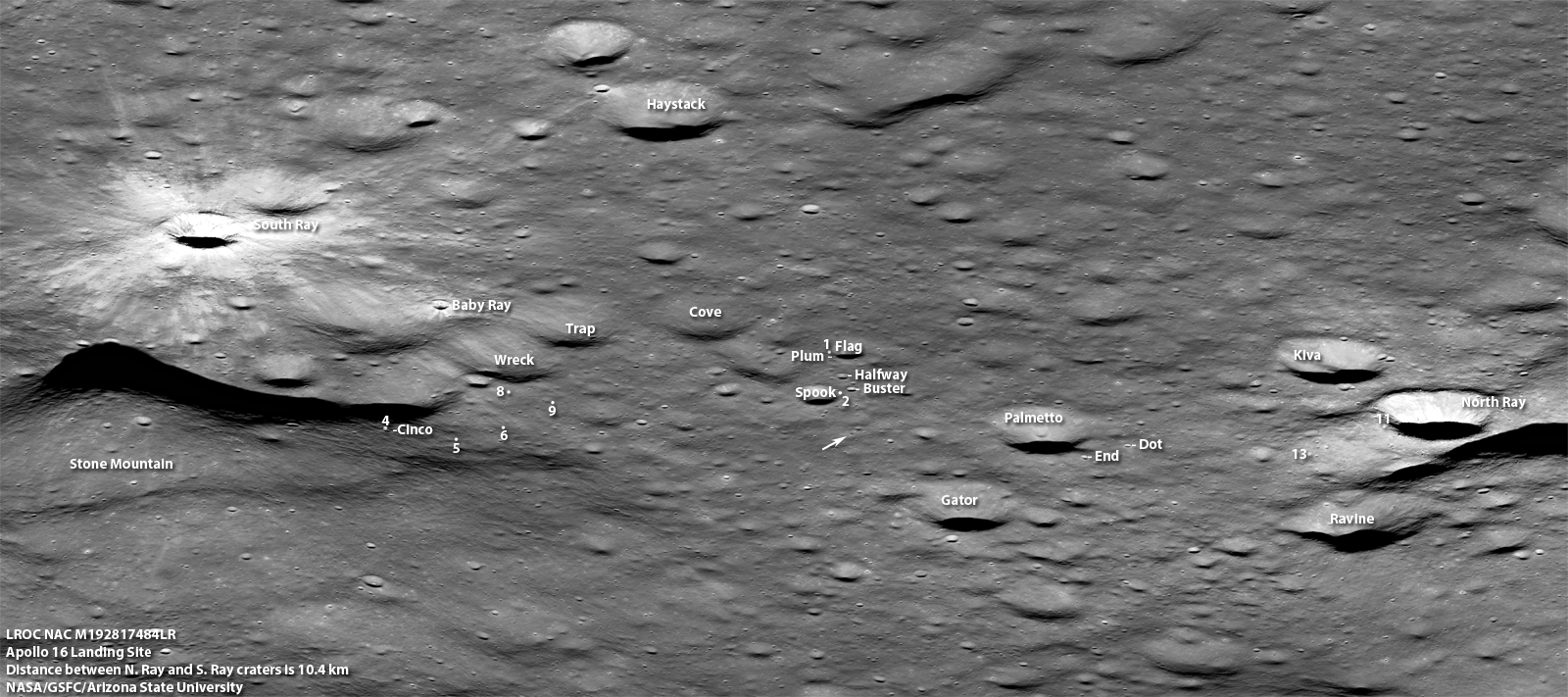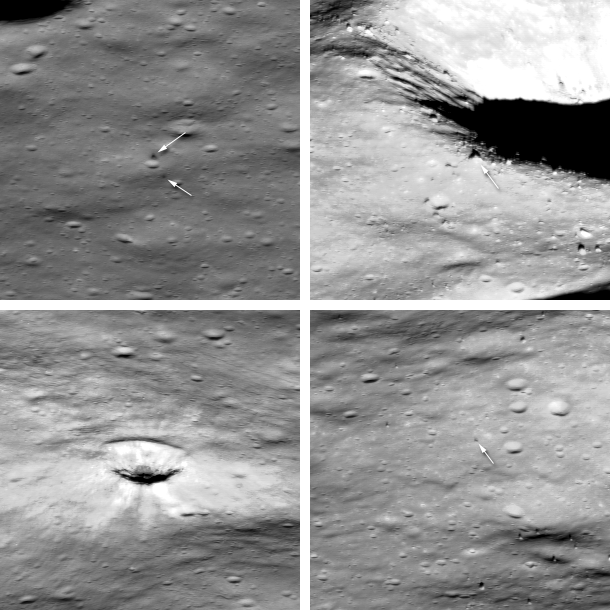
On 28 May 2012 LRO slewed 59° to the west from an altitude of 92 km (57 miles), and captured this dramatic view of the Apollo 16 landing site. During the Apollo 16 mission Ken Mattingly passed over the site several times at an altitude of 120 km (75 miles). If you imagine yourself in the Command Module, then this view is close to what you would have seen. The lighting is nearly identical to that of when the LM Orion set down on the Moon.
On the second day of surface activities John Young and Charlie Duke headed south to sample material from Stone mountain and ejecta from South Ray crater. They headed south and turned east climbing up the flank of Stone Mountain. Imagine the view that Young and Duke had from Cinco crater (Station 4)! From their vantage point some 300 meters above the LM, the astronauts could see all the way from South Ray crater to North Ray crater.
With the annotated version you can easily retrace the routes followed by Young and Duke as they spent three days exploring this highland landing site. Read a detailed reconstruction of the astronaut activities on the Lunar Surface Journal. What did they find at House rock? Why was Shadow rock an important science target? Is Baby Ray crater older or younger than South Ray crater? Then imagine yourself picking up where the Apollo astronauts left off over forty years ago! When will we return to the Moon?
Dive into the full resolution oblique shot of the Apollo 16 site.
Retrace the astronaut traverses in an annotated version of oblique image.
Previous Apollo 16 LROC Featured Images
Published by Mark Robinson on 19 June 2012

